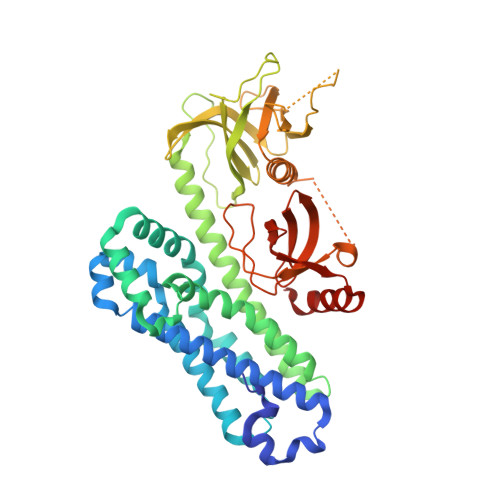Double inhibition and activation mechanisms of Ephexin family RhoGEFs.
Zhang, M., Lin, L., Wang, C., Zhu, J.(2021) Proc Natl Acad Sci U S A 118
- PubMed: 33597305
- DOI: https://doi.org/10.1073/pnas.2024465118
- Primary Citation of Related Structures:
7CSO, 7CSP, 7CSR - PubMed Abstract:
Ephexin family guanine nucleotide exchange factors (GEFs) transfer signals from Eph tyrosine kinase receptors to Rho GTPases, which play critical roles in diverse cellular processes, as well as cancers and brain disorders. Here, we elucidate the molecular basis underlying inhibition and activation of Ephexin family RhoGEFs. The crystal structures of partially and fully autoinhibited Ephexin4 reveal that the complete autoinhibition requires both N- and C-terminal inhibitory modes, which can operate independently to impede Ras homolog family member G (RhoG) access. This double inhibition mechanism is commonly employed by other Ephexins and SGEF, another RhoGEF for RhoG. Structural, enzymatic, and cell biological analyses show that phosphorylation of a conserved tyrosine residue in its N-terminal inhibitory domain and association of PDZ proteins with its C-terminal PDZ-binding motif may respectively relieve the two autoinhibitory modes in Ephexin4. Our study provides a mechanistic framework for understanding the fine-tuning regulation of Ephexin4 GEF activity and offers possible clues for its pathological dysfunction.
Organizational Affiliation:
Ministry of Education Key Laboratory for Membraneless Organelles and Cellular Dynamics, Hefei National Laboratory for Physical Sciences at the Microscale, School of Life Sciences, Division of Life Sciences and Medicine, University of Science and Technology of China, 230027 Hefei, China.















